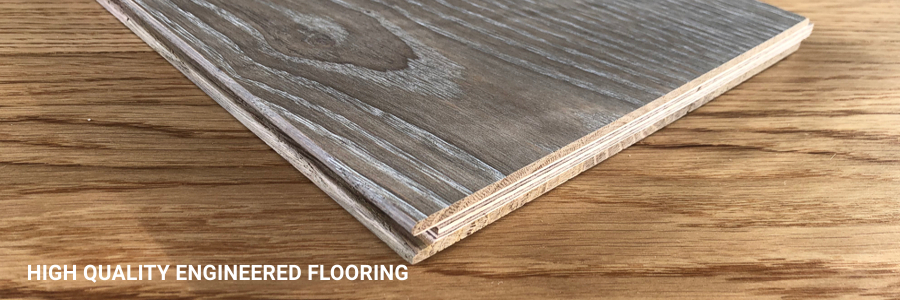Solid Wood or Engineered Wood Floors?
Many people find it difficult to differentiate between solid wood floors and engineered floors. Well, let us quickly tell you that both of them are made from real hardwood but in different ways. The primary difference between solid wood and engineered flooring is actually in the construction of the planks. Consequently, this affects when and where you can use them. The choice between solid and engineered floors depends upon the preference of the user and also the place where you want the wood flooring to be fitted.
If you want to further explore the difference between solid and engineered wood floors, then this article is for you. Keep Reading!
Solid Wood Flooring
Solid wood floors are made from solid pieces of hardwood. The wood is obtained straight from the trunk of the tree, then made into planks by a machine. Usually, solid wood floors are made from different species of wood with varying plank size as well as a choice of finish. On the other hand, you can also opt for unfinished flooring, which actually gives you the privilege to install the floor first and then you can match a color stain and/or can style the finish to your preferred décor.
Solid wood flooring is widely desired and popular as experts believe that they create a very luxurious appeal to your house. In addition, the majority of this type of floor comes with a traditional fitting profile (tongue and groove), although people can find solid parquet blocks too. You can fix them into position during the process of parquet floor installation. Likewise, they do not float over an underlay since they need high stability of being safely fixed to the wooden subfloor.
Engineered Wood Flooring
There is multiple wood layers in the engineered wood flooring.

Usually, the surface of the engineered flooring plank is known as the “wear layer.” So, when the floor is fitted, this is the part which you can actually see. Moreover, the “wear layer” the chosen wood specie, for instance, Walnut or Oak, and is typically between 3mm to 6mm in thickness. Engineered wood flooring can either have a tongue and groove profile or a click fitting system. In addition, you can also find it in parquet blocks. Plank lengths, thickness, and widths can be varying as it depends heavily on your requirements.
You can also choose difference finishes, including lacquered, oiled, unfinished, and brushed. It is important that when you choose an unfinished wood floor, then you are required to protect it with a lacquer or oil once you have installed it. Moreover, these floors must not be mistaken for other types of floors, especially laminate floors. Engineered wood floors have the top layer made of real hardwood, whereas the laminate floor is actually more of a quality picture of wood flooring laminated onto “high-density-fiberboard.”
Furthermore, it is worth knowing that engineered flooring is a stable product and you can install it in over an underlay, underfloor heating, and in conservatories. If required, you can also fix it to the subfloor. Lastly, if you choose a click system, then you can install it quickly and easily.



